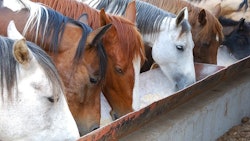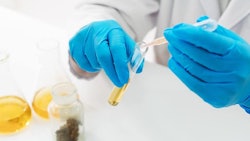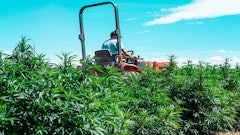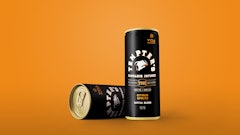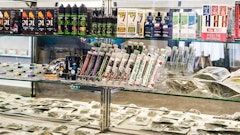
Editor’s note: This article originally ran on sister publication Cannabis Business Times’ website. Puffin Farm and East Fork Cultivars also grow hemp.
Cannabis was meant to burn—but not like this.
A heat dome trapped over the Pacific Northwest has broiled much of the region, with record-setting triple-digit temperatures being felt from Whistler, British Columbia, all the way to Northern California. Cannabis cultivators in the area are hard-pressed to keep operations going as they try to protect both their crops and their teams from the potentially deadly heat.
“We are roasting both in Ellensburg and Seattle,” Jade Stefano, co-founder and CEO of Washington-based Puffin Farm, told Cannabis Business Times in a June 28 email. Stefano reported temperatures of 105 degrees Fahrenheit, with a weekly high of 112 degrees expected in the coming days.
Per The Washington Post, a heat dome is a pocket “of slow-moving hot air under higher pressure that blocks new weather systems from moving in.”
Stefano, who operates both an indoor extraction facility in Seattle and greenhouse operation in Ellensburg, added that conditions weren’t much improved in the greenhouse—even with shade cloths and swamp coolers, the structures remain above 80 degrees. While that is an improvement on the outdoor temperature, it remains elevated for ideal cannabis cultivation (which typically is set in the mid-to-high-70s).
Alex Cooley, co-founder of Solstice, which cultivates indoors, outdoors and in greenhouses in Seattle, Ephrata and Trinidad, Washington, said the company has moved shifts up earlier in the day, with some starting at 4 a.m. In addition, he noted they have increased irrigation frequency but decreased volume, and water right before the lights go out.
And, like Stefano, one of the primary tools Solstice using to beat the heat is “shade cloth, shade cloth, shade cloth,” Cooley said in an email sent June 29.
In Washington's Okanogan County, Cannasol Farms owner Jeremy Moberg said that the most shocking aspect about the heat is how early it arrived this year. While he has experienced triple-digit temperatures in past years, “it was like one day in August. ... It wasn't prolonged,” he said in a phone interview with CBT.
Moberg said he has yet to see any outsized negative impacts from the heat on the crops but remains vigilant for the health and safety of his team, especially when working under light-deprivation structures where he estimates the air to be approximately 130 degrees F (or roughly 55 degrees Celsius). He has stocked up on popsicles for staff to keep cool, as well as shifted work schedules to 5-10 a.m. so his team would not be working under the direct sun or during the peak heat.
As temperatures rocketed to 104 degrees in the Emerald City over the weekend, Stefano is allowing staff at the Seattle extraction lab to start and finish work earlier, or simply not come in. That’s because the warehouse is not equipped with air conditioning (the farmhouse in Ellensburg does have A/C for the team members to cool off).
In Southern Oregon, Takilma-based East Fork Cultivars saw temperatures peak at 115 degrees F this past weekend. Aaron Howard, co-founder of East Fork Cultivars, said in an email to CBT on June 29 that the company was able to plant its crop a bit earlier this year (thanks to warm and dry temperatures), allowing the plants to acclimate to the outdoor conditions over a longer period before the heatwave hit, minimizing heat-related plant stress. “I imagine if we had only just planted, the plants would have struggled,” he said.
To keep his recently planted crops alive through the heat, Moberg has been using roughly twice the amount of water he would normally be using at this time. “I have two of my own wells, and I’m a little bit worried about them going dry,” he said. “We are lucky enough to have a big, massive aquifer that dates back to the ice ages. But we're essentially mining [water]. It's not being replaced at the same rate.” Stefano also increased irrigation frequency in addition to running sprinklers through the crop.
Moberg said farmers who typically plant later in the season might want to consider waiting a few extra days to ensure clones and smaller plants don’t get overwhelmed by both the transplant shock and heat stress, the combination of which could lead to total crop loss.
One benefit of the heat, according to Moberg, is that he has not experienced the same pest pressures as in years past—although that is likely to be short-lived. Once the temperatures drop to optimal conditions for pest development, he expects insects such as russet mites to make their presence felt as they return to their normal lifecycles. “Be on top of the pest pressure,” he advised, “’cause it's going to follow the heatwave.”
Cannabis Business Times editor Michelle Simakis contributed to this story.
Brian MacIver is the managing editor for sister publications Cannabis Business Times and Cannabis Dispensary.










